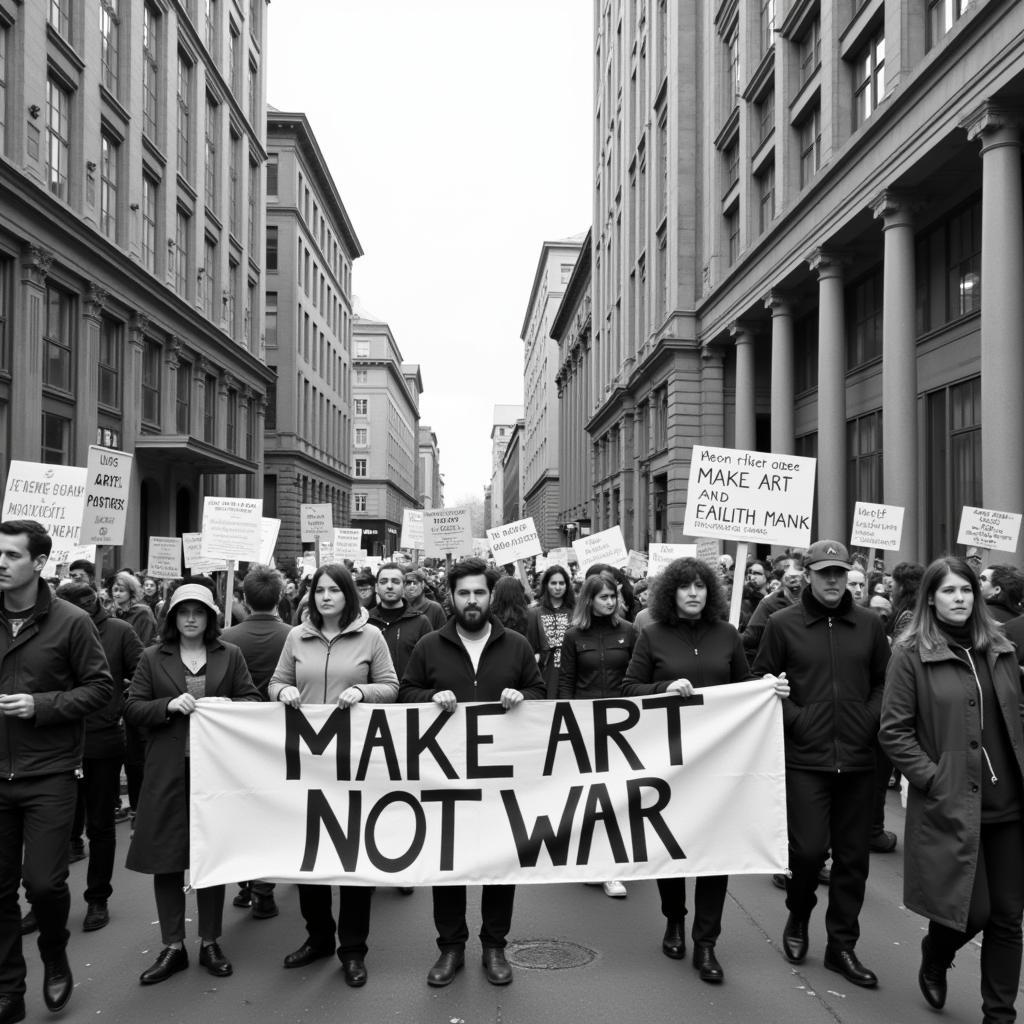Art, in its various forms, has been an integral part of human civilization since time immemorial. From the cave paintings of our ancestors to the digital masterpieces of today, art serves as a powerful medium of expression, communication, and social commentary. But How Does Art Impact Society? Let’s delve into the profound and multifaceted ways art shapes our world.
Art as a Reflection of Society
Art often serves as a mirror, reflecting the values, beliefs, and struggles of the society from which it emerges. It captures the zeitgeist, the defining spirit of a particular era, providing insights into the social, political, and cultural landscape of the time.
For instance, the Renaissance witnessed a surge in humanist art, celebrating human potential and achievement, reflecting the era’s shift from religious dogma to a more human-centered worldview. Similarly, the turbulent 20th century gave rise to various art movements like Dadaism and Surrealism, expressing the anxieties and uncertainties of a world ravaged by war and social upheaval.
 Art Reflecting Society
Art Reflecting Society
Art as a Catalyst for Social Change
Beyond reflecting society, art possesses a unique ability to inspire, provoke, and ignite social change. Art can challenge the status quo, question established norms, and raise awareness about critical social issues, often pushing boundaries and sparking dialogue.
Throughout history, artists have utilized their craft to shed light on injustice, inequality, and oppression. Think of Picasso’s “Guernica,” a powerful anti-war painting depicting the horrors of the Spanish Civil War. Or consider the works of Frida Kahlo, whose art explored themes of gender, identity, and the female experience, challenging societal expectations and inspiring generations of women.
Art Fosters Empathy and Understanding
Art possesses an unparalleled capacity to transcend cultural and linguistic barriers, fostering empathy and understanding between individuals and communities. By tapping into universal human emotions and experiences, art allows us to connect with others on a deeper level, breaking down prejudices and fostering a sense of shared humanity.
Consider the impact of music. A haunting melody or an uplifting rhythm can evoke a shared emotional response, regardless of language or background. Similarly, literature allows us to step into the shoes of others, experiencing the world through their eyes and developing empathy for their struggles and triumphs.
Art and Economic Impact
The impact of art extends beyond the social and cultural realms, significantly influencing the economy. The art industry, encompassing visual arts, performing arts, and creative industries, contributes significantly to global economies, generating jobs, attracting tourism, and driving innovation.
Art hubs and cultural events draw visitors from around the world, boosting local economies and promoting cultural exchange. Moreover, the creative industries, fueled by artistic innovation, play a crucial role in today’s knowledge-based economy, driving technological advancements and shaping consumer trends.
Art for Personal Growth and Well-being
Beyond its broader societal impact, art profoundly influences us on a personal level. Engaging with art, whether creating or experiencing it, offers numerous benefits for our mental, emotional, and even physical well-being.
Studies have shown that art can reduce stress, alleviate anxiety, and even aid in healing. Creating art provides an outlet for self-expression, allowing us to process emotions, explore our creativity, and boost self-esteem. Experiencing art, whether visiting a museum, attending a concert, or reading a book, can uplift our spirits, broaden our perspectives, and enrich our lives.
Conclusion
The impact of art on society is undeniable. It serves as a mirror, reflecting our world, and a catalyst, shaping it. From inspiring social change to fostering empathy, driving economic growth to nurturing personal well-being, art plays a vital role in shaping our individual lives and the world we inhabit. As we navigate the complexities of the 21st century, art remains as relevant as ever, offering a powerful means of understanding ourselves, connecting with others, and building a more just and compassionate world.
Do you have questions about how art impacts society?
Here are some frequently asked questions:
FAQ:
-
How can art be used to promote peace?
Art can be used to promote peace by fostering dialogue, challenging prejudices, and promoting empathy and understanding across cultures. -
What is the role of art in education?
Art plays a vital role in education by fostering creativity, critical thinking, and problem-solving skills. -
How does art impact mental health?
Art can have a positive impact on mental health by reducing stress, promoting self-expression, and providing a sense of purpose and accomplishment. -
What are some examples of art that have sparked social change?
Examples include Picasso’s “Guernica,” which raised awareness about the horrors of war, and the works of Frida Kahlo, which challenged gender norms and celebrated female identity. -
How can I get more involved in the arts?
You can get more involved in the arts by visiting museums, attending concerts and theater performances, taking art classes, or supporting local artists.
For more information about art and its impact on society, check out these resources:
Need Help?
Contact us at Phone Number: 02043854663, Email: [email protected], or visit us at Khu 34, Bắc Giang, 260000, Vietnam. Our customer service team is available 24/7 to assist you.